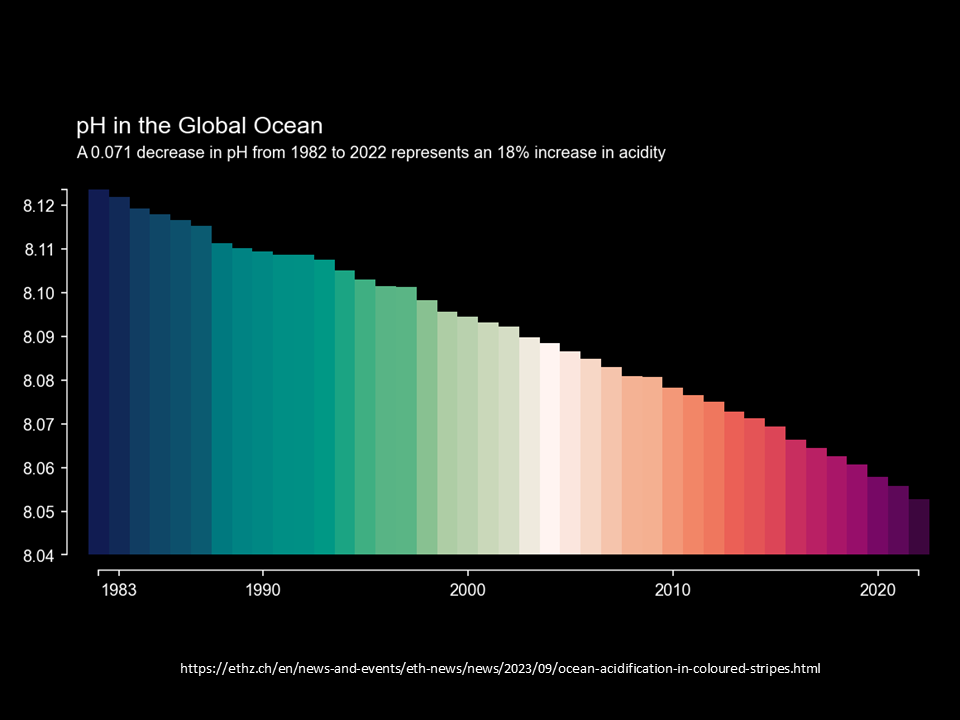Pick Up
866. Ocean Acidification Stripes

866. Ocean Acidification Stripes
A recent article on the ETH Zurich website addressed the issue of ocean acidification. The article highlighted a common human perception of climate change, focusing primarily on atmospheric warming and its impact on land. However, the article argued that this perspective is anthropocentric and fails to recognize the profound impact of climate change on the world's oceans. Emphasizing the critical role of the oceans in the climate system, the article pointed out that the oceans absorb a significant amount of heat resulting from escalating concentrations of greenhouse gases in the atmosphere. They also act as a vital sink for carbon dioxide from human activities. Unfortunately, this absorption has led to ocean acidification, an urgent problem with far-reaching implications for marine life.
In an effort to highlight the severity of ocean acidification, researchers at ETH Zurich have developed a visualization tool called ocean acidification stripes. Inspired by Dr. Ed Hawkins' concept of "temperature stripes" or warming stripes, these patterns use a color code to depict the progression of ocean acidification as carbon dioxide dissolves in seawater, causing pH levels to drop.
Ocean acidification is expected to profoundly disrupt the marine food chain and ecosystems. The use of ocean acidification stripes as a visual representation serves to underscore this progression and acts as a stark warning that human-induced carbon dioxide emissions pose a serious threat to marine ecosystems.
Contributor: IIYAMA Miyuki (Information Program)
